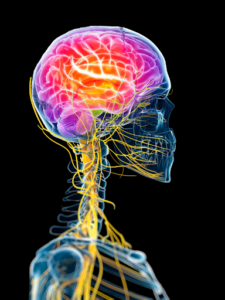In the realm of therapy, there are two distinct approaches: top-down and bottom-up. Both approaches aim to address psychological distress. However, they differ in their primary focus. Today, we’ll explore why the bottom-up approach to therapy, particularly through EMDR Therapy, holds significance in healing trauma and fostering well-being.

The top-down approach to therapy emphasizes the power of cognition, thoughts, and beliefs in shaping our emotions and behaviors. In other words, it involves exploring and changing thought patterns and perceptions to bring about change. This approach often involves talk therapy and techniques like cognitive-behavioral therapy (CBT), which focus on understanding and restructuring problematic thoughts.

On the other hand, the bottom-up approach to therapy acknowledges the profound influence of our bodily sensations, emotions, and nervous system on our well-being. This approach recognizes that trauma and distress can get stuck in our bodies, affecting our daily lives. EMDR Therapy is an exemplary bottom-up approach that helps individuals process and integrate traumatic experiences through bilateral stimulation.

EMDR Therapy stands for Eye Movement Desensitization and Reprocessing, and it has gained recognition as an effective treatment for trauma-related disorders, such as PTSD. Unlike traditional talk therapy, EMDR Therapy emphasizes bilateral stimulation, which can be achieved through eye movements, taps, or auditory cues.

By engaging in this bilateral stimulation, EMDR Therapy activates both hemispheres of the brain.
This facilitates the processing of traumatic memories and emotions. It allows individuals to access and reprocess distressing experiences, fostering their natural healing capacity. To sum up, this approach can bring relief by reducing the emotional intensity associated with traumatic memories and building more positive connections in your brain.

Why the Bottom-Up Approach Matters
While the top-down approach is valuable in addressing cognitive distortions and belief systems, the bottom-up approach provides a complementary path to healing. Traumatic experiences can manifest as physical sensations, flashbacks, or overwhelming emotions that are difficult to verbalize. EMDR Therapy taps into these somatic experiences, as a result, individuals are able to heal from the inside out.

Transitioning between the two approaches, as needed, can lead to comprehensive healing. As a matter of fact, by integrating the cognitive and somatic aspects, individuals can gain a deeper understanding of their experiences, promote emotional regulation, and cultivate resilience.
In the world of therapy, the top-down and bottom-up approaches play distinctive roles. While the top-down approach focuses on thoughts and beliefs, the bottom-up approach, exemplified by EMDR Therapy, addresses the body and its role in processing trauma. By combining these approaches, therapists can offer a holistic and integrated approach to healing.

Remember, everyone’s journey is unique.
For this reason, the therapy approach that works best for one person may differ for another. So, when seeking therapy, it’s crucial to find a therapist who aligns with your needs. They should understand the value of both the brain and the body in the healing process. If you think that we may be a good fit, I would love to talk more!

Here are a few of my favorite ways to connect to a therapist.
- Therapy Den
- EMDR Therapists
- Therapy for Black Girls
- Inclusive Therapists
- Mental Health Match
In the end, what truly matters is finding a therapeutic approach that resonates with you, supports your growth, and empowers you to lead a fulfilling life.
